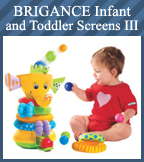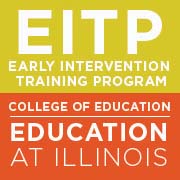The BRIGANCE Infant and Toddler Screens III is an individual criterion-referenced and norm-referenced screening assessment designed to assess general development across a range of skills in children from birth through the end of the first-grade year (seven years, six months). Skills within the screen include: Fine Motor, Gross Motor, Expressive Language, Receptive Language, Self-Help, and Social and Emotional skills. Test time is 15 minutes.
Designed specifically to obtain a broad sampling of a child's development and skills, this valuable assessment instrument provides percentile ranks, standard scores, and age equivalent scores.
Assessments from the Infant & Toddler Screen are criterion-referenced, curriculum-referenced, and norm-referenced. Accommodations are made for infants born prematurely (until age 2). The Screen also has adjustments and separate cutoffs for children at psychosocial risks.
The Screen meets I.D.E.A. requirements and the needs of a host of early childhood programs, including Early Head Start, Head Start, Early Intervention, Day Care, Pre-School Programs, School Programs, and health care settings.
In addition, the Brigance helps:
· Diagnose delays, disabilities, giftedness and other exceptionalities
· Determine present level of performance
· Write IFSP’s & IEP’s and monitor progress
· Produce scoring
· Support alternate assessment needs
Course intent: To provide early intervention therapists with a focused understanding of the Brigance assessment instrument that both fast-tracks their ability to process and assimilate their understand of this imperative fine and gross motor tool, as well as its analysis of the social emotional and language delays for infant or toddler, while testing their understanding prior to its application in the clinical setting.
Relevance to early intervention: Occupational & physical therapists as well as social workers, special educators and speech language pathologists in the early intervention setting are on the front line of treating children's adaptive, fine or gross motor dynsfunction, as well as deficits in language and social-emotional domains. The Brigance is an invaluable norm-referenced evaluation instrument critical to any initial evaluation, and serves as a baseline for improvement in all other subsequent evaluations to document progress. Applicable in the visiting the home in the early intervention setting, facility based setting, or pre-school settings, this short and helpful course will assist the early intervention provider to navigate through the maze of material offered with the classical edition of the course.
Outcomes:
Provider will be able to: identify deficits in the motor, language, social emotional and adaptive domains for both the clinical and educational settings so as to set future goals and outcomes for the child in the early intervention and pre-school setting
Provider will be able to: Identify dysfunction reflecting delay in several developmental domains so as to determine short and long term goals for both individual family service plans (IFSP’s) in the early intervention setting, and individual educational plans within the pre-school setting
Provider will be able to: Identify and diagnose delays, disabilities, or other exceptionalities
Provider will be able to: Identify level of performance in adaptive, speech, social-emotional, as well as fine and gross motor domains
Provider will be able to: Identify standard scores, percentile rankings, and age equivalent mathematical data to accurately document level of dysfunction, and improvement over time
Provider will be able to: Utilize this norm-referenced assessment instrument to identify indices that can assist in recommended academic placement, instructional planning, and both initial and ongoing eligibility
Speech Language Pathology:
Target Audience: Speech Language Pathologists, Speech teachers & Audiologists
Course Level: Intermediate & Individual
Course Content: 3010 language disorders assessment and intervention - Assessment - Professional






